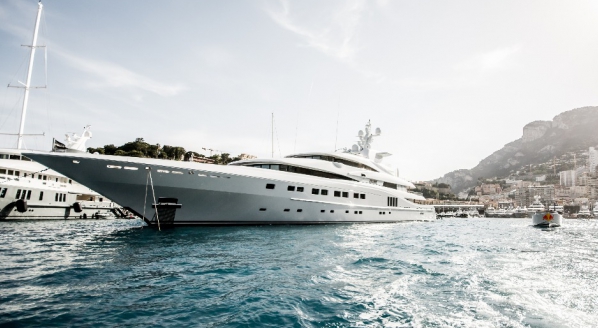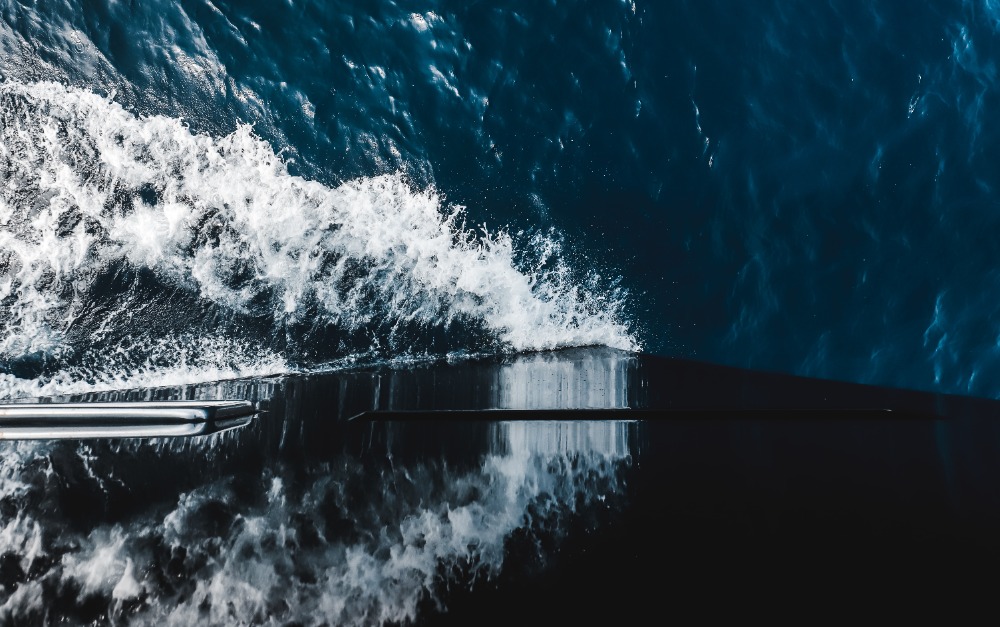Superyacht paint: in the eye of the beholder
CCS technical manager Colin Mason discusses how the yacht painting process has evolved…
All major paint suppliers sell their products with thorough and well-proven recommendations regarding application, in terms of climatic conditions, surface preparation and film thicknesses, etc. All the painter has to do is follow the instructions. This was often the only line in old contracts: “All products shall be applied as per manufacturer’s recommendations”. Which is fine… the important point for any buyer is that this should (must?) be provable.
When suppliers sell material, this is made and tested under independently audited quality systems. You can even ask for a certificate of conformity for the batch you received that will list the test results. At every stage there are checks to ensure the manufacture is in specification.
This is ideal. Painting a yacht… over nine months… with 100 different pairs of hands… using multiple stages from sanding to application? By its very nature of having many more steps and much more processing, it requires a much more thorough QA/QC path to avoid any risks of defects, be that rework or rejection.
In an ideal contract, the buyer will be told what they will receive. They will also ideally know what controls will be put in place to ensure compliance. This is the basis of a paint inspection plan (PIP) or inspection and test plan (ITP).
This plan details the control steps and the pass/fail criteria for every stage as well as final topcoat appearance. This is signed off by the owner team, yard and applicator. This prevents any discussion, for example, of what exactly ‘North European yacht standard’ is (a common phrase used in the not-so-distant past).
The technical requirements, for example surface preparation, film thicknesses, application and curing conditions, overcoating times etc. are defined by the supplier but there are also all the cosmetic aspects such as gloss, orange peel and fairness which, within reason, are defined and agreed between the seller (yard/painter) and the buyer.
Now it shouldn’t really matter who does the check, so long as the check is performed and signed off. The process just entails lots of release-forms with appropriate results and signatures. Normally, these will be from the yard and the owner’s representative (be that project manager or independent paint consultant.)
Just like every other paperwork process, this is ripe for digitisation to ensure nothing falls through the holes; with checks to ensure that every step is completed to satisfaction and that all the signatories are aware of any punch items that need reworking, and all within a traceable and transparent system.
The system should log all and any information you wish to add, be that daily climate conditions, dry film thickness (DFT) measurements, final orange peel and gloss readings etc. This way, all the relevant information and data for each step is accepted before proceeding. This way everyone knows they are on the right path. The builder/painter knows they are making successful progress and the owner's team can see that what they are getting is what they bought.
We are still seeing many examples of contracts having been signed with only limited acceptance criteria, let alone a thorough paint inspection plan. And if there is a paint inspection plan, the formalised recording and sharing of information is slack. The biggest heartache is normally the tank coating.
While these may seem unimportant and are ‘out of sight/out of mind’, they are anything but. Especially if they go wrong and repair entail weeks in a dry-dock while someone cuts a hole into the underwater area so as to obtain access – the costs of repair are well into six figures per tank, excluding any loss of charter.
It is normal to see a build specification of product x at x micron DFT. The supplier’s recommendations are often a document of 12-20 pages! Everything from the control of the initial metal work to the application of every coat (including stripe coats). There are even recommendations of the level of ventilation required so as to avoid any solvent entrapment or amine-blush – both of which will lead to rapid failure. It is all very well stating ‘product will be applied as per manufacturer’s recommendations’, but the hard reality is that there is often little or no control on every stage of the tank coatings to prove this, let alone control it.
So, I am not talking about re-inventing the wheel or developing new concepts. I am only asking that all involved pay attention to the supplier’s recommendations, follow these and prove that these have been followed.
Only then will we not only be sure we reach our destination; the destination is one of happiness looking out over your aft deck to the sunset and not stuck in a dry dock looking at your bank account getting smaller for something that could have easily been avoided
Profile links
CCS - Coating Consultants for Superyachts
NEW: Sign up for SuperyachtNewsweek!
Get the latest weekly news, in-depth reports, intelligence, and strategic insights, delivered directly from The Superyacht Group's editors and market analysts.
Stay at the forefront of the superyacht industry with SuperyachtNewsweek
Click here to become part of The Superyacht Group community, and join us in our mission to make this industry accessible to all, and prosperous for the long-term. We are offering access to the superyacht industry’s most comprehensive and longstanding archive of business-critical information, as well as a comprehensive, real-time superyacht fleet database, for just £10 per month, because we are One Industry with One Mission. Sign up here.
Related news

The key innovation trends have arrived, so how do you get on board?
Digitalisation is having a transformative effect on yacht operations writes Voyager Worldwide’s Hayley Van Leeuwen
Technology

ICOMIA publishes industry guidelines on ceramic coatings
The document aims to provide guidance on the most common queries relating to ceramic coating systems on yachts
Business

AkzoNobel acquires New Nautical Coatings
AkzoNobel is due to acquire New Nautical Coatings, owner of the Sea Hawk yacht coatings brand
Business
Related news
AkzoNobel acquires New Nautical Coatings
5 years ago
NEW: Sign up for
SuperyachtNewsweek!
Get the latest weekly news, in-depth reports, intelligence, and strategic insights, delivered directly from The Superyacht Group's editors and market analysts.
Stay at the forefront of the superyacht industry with SuperyachtNewsweek




